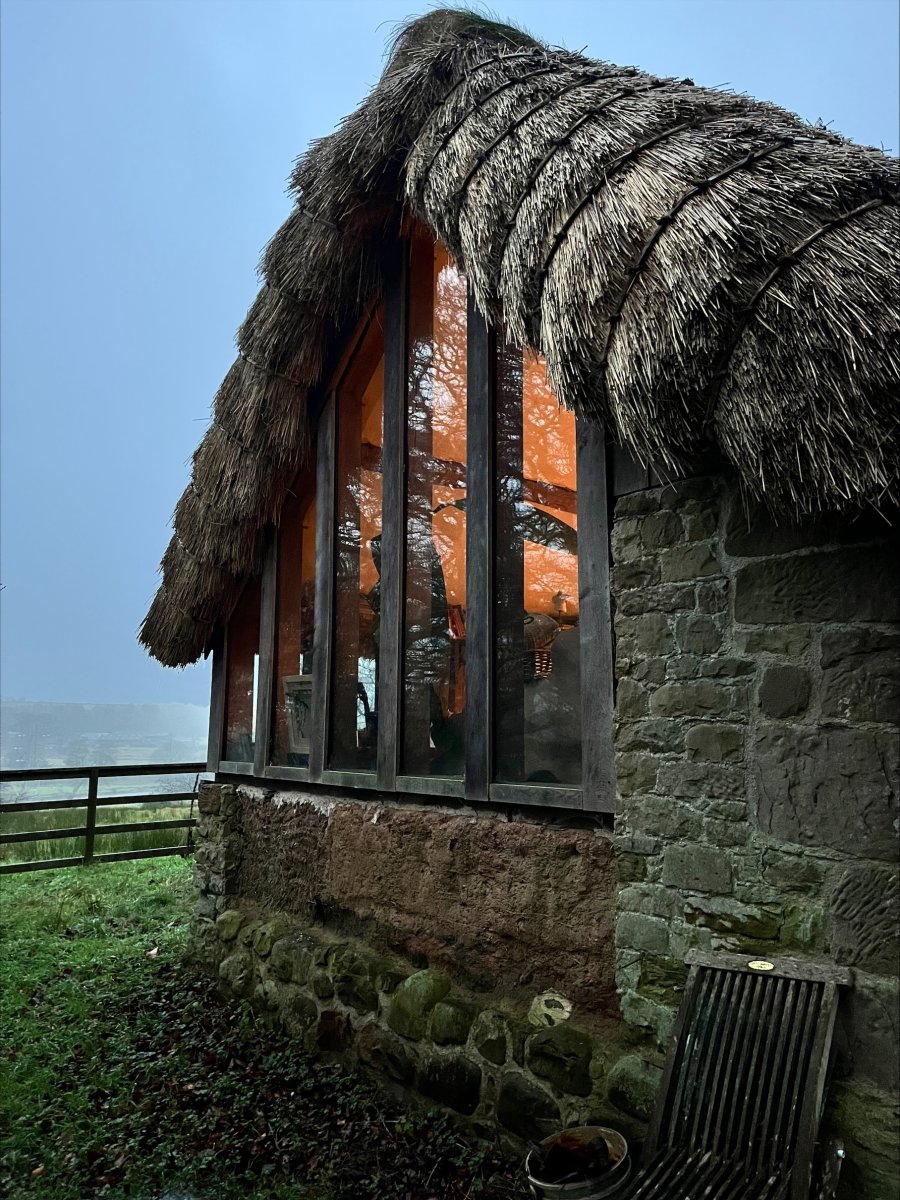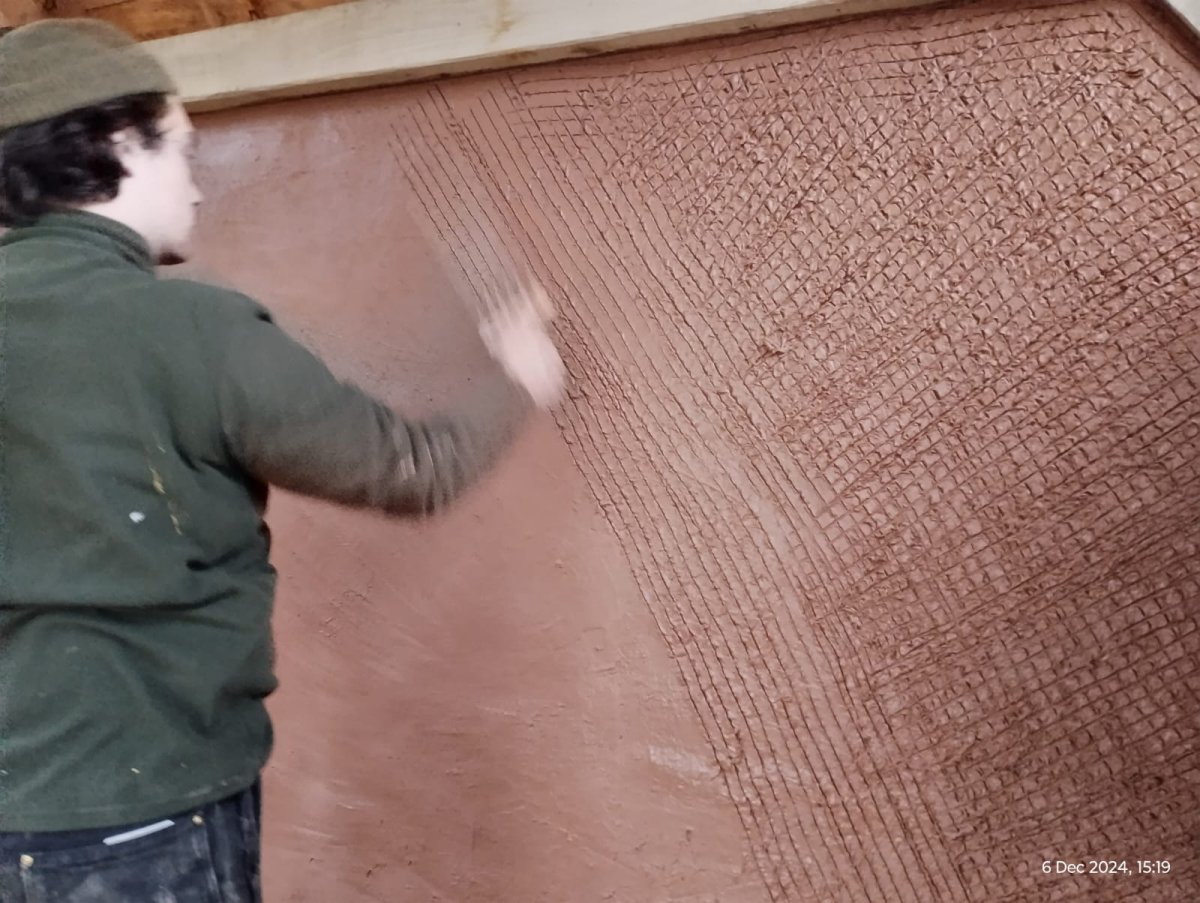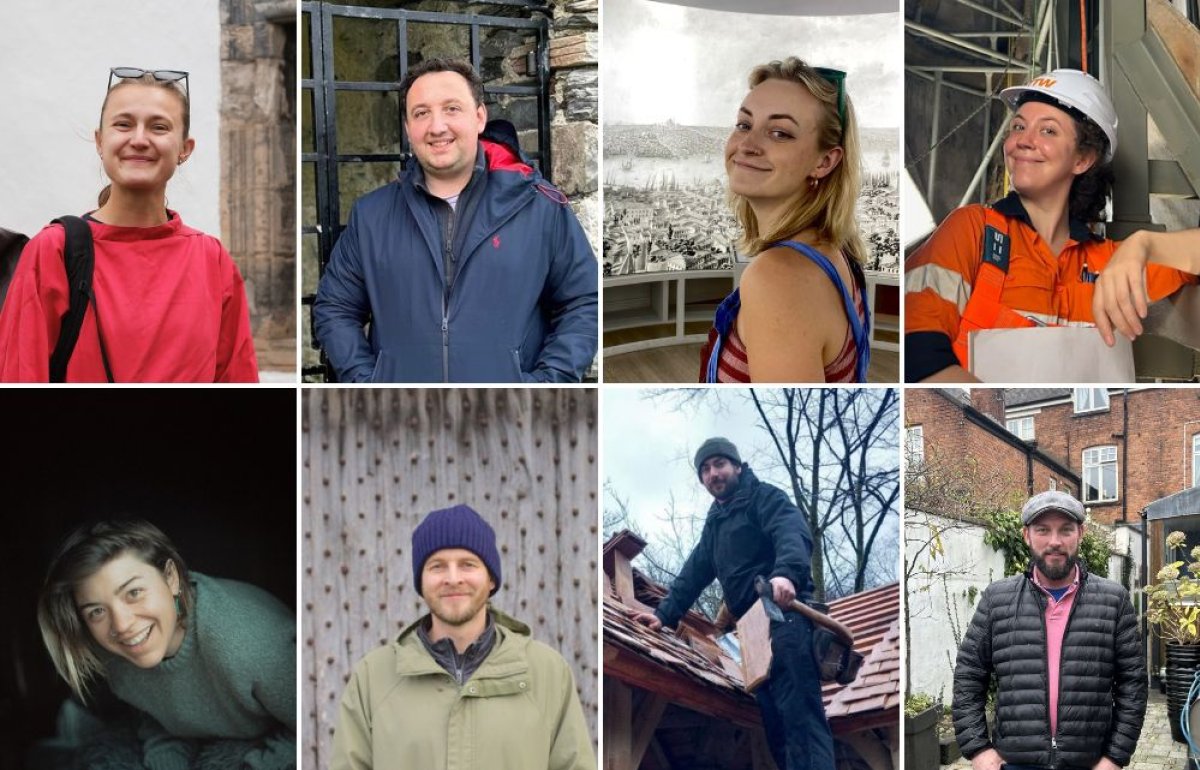
A Day in the Life of a SPAB Fellow: exploring a cruck-framed cob bothy restored using natural materials
Share on:
Every year, we select four craftspeople with a passion for old buildings to join the SPAB Fellowship, a unique training programme designed to broaden the skills and experience of craftspeople involved with historic buildings.
From March to December, the Fellows travel the UK and Ireland together to learn traditional craft techniques from experts in the field and develop their approach to building repair.
James Bull, heritage carpenter and 2024 Fellow, shares a snapshot of what he’s been up to.
Where did you wake up this morning?
This morning, I woke up on the Scottish border near Dumfries, just a five-minute drive from the family home of Alex Gibbons, a SPAB fellow from 2014 who specialises in natural building.

What did you get up to today?
Today, we have been working at Alex’s house. He has been repairing a beautiful cruck framed cob bothy, making it suitable for modern-day living. He completed the project earlier this summer and it’s an absolute dream - a perfect blend of traditional craftsmanship and contemporary comfort! He gave us a tour of his incredible work, where he’s had the freedom to truly showcase his skills. In the afternoon, we learned about traditional mud-building techniques and explored Alex's yard, where he prepares his materials before taking them to site. It was inspiring to see the craftsmanship and preparation that goes into his projects!

Who did you meet?
It was a privilege to meet Alex. It’s been incredible to see how his career has progressed since undertaking the Fellowship 10 years ago. He’s built an outstanding reputation and is a true professional in his field. Meeting him has been both inspiring and motivating, especially as I come to the end of the Fellowship and consider where my own career might take me. This year has been unforgettable—I’ve had the opportunity to meet and work with so many talented individuals, and I’m excited to maintain these connections and draw on their expertise in the future.
What was your most memorable moment this week?
My most memorable moment this week was working with Alex and gaining a deeper understanding of his approach to conservation and repair. His philosophy truly resonates with my own beliefs—he works with the most natural materials, refusing to use anything that doesn’t come directly from the earth. What’s most fascinating is how he makes it all work seamlessly, achieving a high standard of craftsmanship while making it look effortless. His vast knowledge and infectious enthusiasm for historic buildings have been incredibly energising and insightful. It’s a reminder of why I’m passionate about this work and the impact we can have on preserving our heritage.

Is the Fellowship/Scholarship how you expected?
It’s so much more immersive than I imagined. Every day really is a school day! As cliché as it sounds, it’s absolutely true. I didn’t realise just how many questions I had—or needed answering—before starting the program. The Fellowship has shown me that there are answers to many of the mysteries surrounding the conservation of historic buildings, and it’s been invaluable to gain clarity and understanding in such a hands-on, supportive environment.
What’s something that’s surprised you?
It’s not so much a surprise, but more of a reassurance to myself. After visiting and working alongside some of the best craftspeople across the UK, I've realised that we all share the same stresses that come with working in the heritage building sector. Whether it’s something as simple as figuring out the best way to commute to the site in the morning, or more critical concerns regarding the structural integrity of the building, the challenges are universal. Through these experiences, I've become more confident in the choices I’ve made in the past, and I look forward to taking more time in the future to focus on what I’m trying to achieve, always to the best of my ability. The most important thing is to do the job correctly, ensuring a solid understanding of the materials being used and applying them appropriately.
What’s one thing you’ll think about/do differently as a result of your experience so far?
Meeting so many talented craftspeople and like-minded professionals has emphasised the value of collaboration and shared knowledge. I’ll be more intentional about maintaining these connections, seeking advice, and continuing to learn from others even after the Fellowship ends. This experience has taught me to embrace every opportunity to grow as a craftsman and conservationist.

What would you say to someone thinking of applying for the Fellowship/Scholarship?
My advice is simple: do it! It’s a once-in-a-lifetime opportunity to immerse yourself in the world of historic building conservation, learning directly from some of the most skilled and passionate craftspeople in the field. The program offers unparalleled hands-on experience, exposure to a wide variety of materials and techniques, and insights into the philosophies and principles that underpin good conservation practice.
However, it’s not just about the technical skills—you’ll also build lasting connections with a community of like-minded individuals who share your passion for heritage. The Fellowship is demanding but incredibly rewarding. Be prepared to step out of your comfort zone, ask questions, and embrace every challenge with curiosity and an open mind.
Sign up for our email newsletter
Get involved


